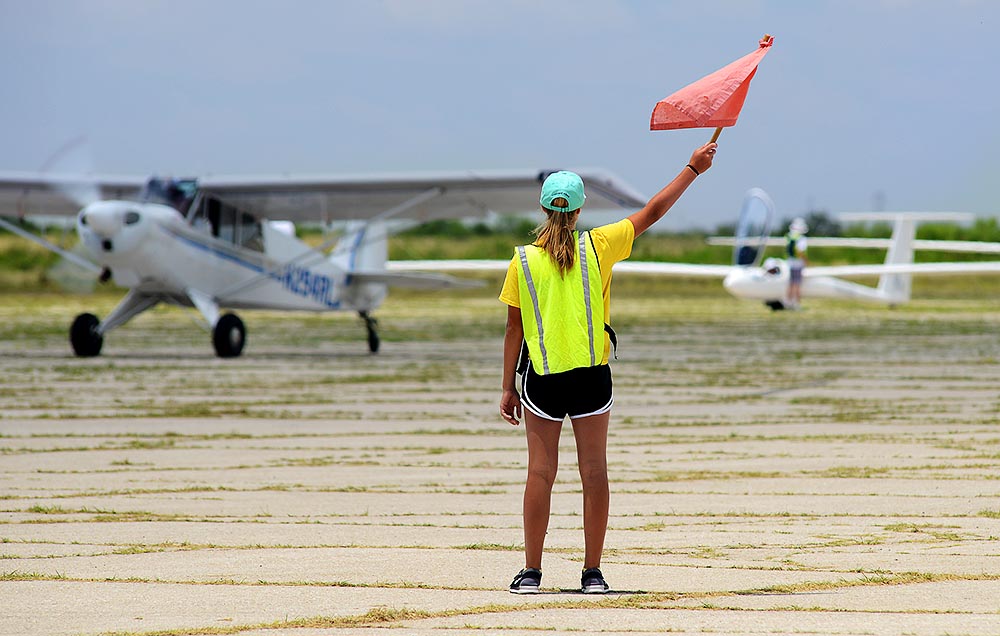Cross-Country Flying
“Heading Out on Course”
When you have earned your private pilot glider certificate, you’ll find the best is yet to come. As your skills and confidence improve, you will learn to leave your home field, head out on cross-country flights, work for proficiency badges, and perhaps enter soaring contests. Numerous fly-ins and badge and wave camps offer soaring pilots and their families and friends a chance to vacation and fly in some of the most beautiful parts of the country. The accomplishment of flying from one airfield to the next, leaving the comfort of known thermal sources and home-field familiarity, is a thrill unequaled in any other sport. The pilot must draw on his accumulated knowledge of the ground and the air mass, navigation, and flying skills plus a dash of adrenalin. Even the most experienced pilots never lose the exhilaration of “heading out on course.” To fly cross-country, the pilot circles up within a “bubble” of rising air, then leaves it to head out on course and find a new source of lift. If cumulus clouds are present, the pilot assesses them constantly, looking for growing young clouds that have a high probability of providing rapid climb. Climb and glide, climb and glide… the rhythm of the flight develops as the cross-country adventure unfolds. No two cross-country flights are ever the same.

Your Ground Crew
For flights of any significant distance, pilots may enlist the support of a one or two-person ground crew, whose job it is to see that the pilot is retrieved at the end of the flight (if the pilot does not return to the home gliderport). The crew helps prepare the pilot and glider for departure and then monitors the flight’s progress via two-way radio. For most flights of any great distance, this is usually done as the crew drives along the pilot’s intended course. In this way, the crew always knows where the pilot is and can rendezvous quickly if a landing is made.
Off-Field Landings
If it is not possible for the pilot to land on an airport, an off-field landing is required. Because of the sailplane’s sturdy single wheel safe landings can be made on relatively rough ground, such as plowed fields. Sailplanes can be landed in relatively short areas, so there are usually many acceptable landing sites from which to choose. Once the crew car has arrived, it’s time to disassemble the glider and load it onto its special trailer. During the drive back to the home field, the pilot unwinds, chatting about the adventure just completed and slowly returns to the land of ordinary mortals.


